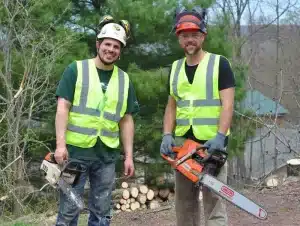Let me introduce you to your new least favorite insect: the Spotted Lanternfly. This nefarious nemesis of the Northeast is known for three things—looking cool, being incredibly destructive, and leaving behind a sticky mess that’ll have you second-guessing your life choices every time you walk under a tree.
Originally from Asia, the Spotted Lanternfly (SLF if you’re into acronyms) first touched down in Pennsylvania in 2014, and let’s just say—it’s made itself very comfortable. So comfortable, in fact, that Lycoming and Bradford counties are now under state quarantine. And here’s the kicker: sightings have already been reported in Tioga and Chemung counties! That’s right—it’s not a matter of if they’re coming, but when. How do I know? Last year, while admiring my 5th grader’s bug collection project (think mini-insect museum on a Styrofoam slab), I spotted one. Not on a tree. Not flying through the forest. No, friends—it was pinned neatly in the classroom display case with a label that may as well have said: “The Invasion Has Begun.”
What Does It Look Like?
Before you call in a priest or an exterminator, let’s talk ID. Adult lanternflies are about an inch long with wings that look like someone bedazzled a moth. The forewings are gray with black spots, and the hindwings (you’ll only see them when they fly, which they do poorly) are a vivid red with black and white accents. It’s as if a ladybug and a moth got married and had babies. The nymphs (adolescent bugs) start off black with white polka dots. Then they grow into red-and-black polka-dotted monsters. Basically, the whole lifecycle looks like a fashion-forward villain from a Tim Burton movie.
Why Should You Care?
They’re tree vampires—but without the charm or the fangs. SLF feed by inserting their straw-like mouths into plant stems and slurping up the sap. This weakens the plant, disrupts its nutrient flow, and leaves it vulnerable to disease and stress. They’ve got a particular taste for grapevines, maples, fruit trees, and over 70 other species.
And if that wasn’t enough, while they feed, they excrete a sugary goop known as “honeydew” that rains down onto whatever’s underneath—patios, cars, lawn furniture, the dog, even your favorite garden gnome. That honeydew turns into black sooty mold, making your backyard look (and smell) like it lost a bet.
What Should You Do?
Kill it. Yes, really. If you see one, squish it. This is one of the rare moments in life when indiscriminate violence is not only acceptable but encouraged by the state.
Report it. Head over to the state’s SLF reporting site or your local extension office and submit a sighting. Pictures help!
Check your stuff. SLFs love to lay eggs on cars, firewood, outdoor furniture, and anything else you might move from one location to another. Those egg masses look like smears of mud—scrape them off and destroy them.
Don’t panic… yet. But do be vigilant. If you own grapevines, fruit trees, or maples, keep an eye out and consider preventative treatments if you’re in a hot zone.
Final Thoughts
The Spotted Lanternfly may look like a flying polka-dotted sticker bomb, but make no mistake: it’s here to party—and your trees are the dance-floor. So stay alert, report sightings, and don’t be afraid to channel your inner bug-squashing ninja. Your patio furniture (and your local arborist) will thank you.
Mike White is an ISA board certified master arborist and owner of Treemaster LLC. If you’re interested in learning more about tree related issues, you’ll find him to be moderately obsessed. You can reach him at mike@treemasterllc.com.




